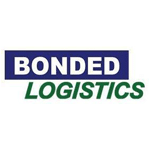The Comprehensive Guide to Inventory Management in eCommerce for Warehouse Operators
A Whouse Management System (WMS) has the potential to revolutionize your warehouse operations, improving efficiency, accuracy, and reducing costs. However, implementing a WMS can be a complex and challenging process for supply chain professionals.
In this comprehensive guide, we’ll share our insights as a leading provider of WMS software on how to navigate common cha
Mistake #1: Overestimating the benefits or underestimating the challenges of implementing a WMS, leading to unrealistic expectations and disappointment.
How to Avoid:
- Conduct a thorough analysis of your current warehouse operations to identify specific areas for improvement and set achievable goals.
- Establish clear and measurable key performance indicators (KPIs) to track progress and success.
- Communicate regularly with stakeholders about project progress, challenges, and adjustments needed to maintain alignment and manage expectations.
Unrealistic Implementation Schedule: Properly Scope the Project
Mistake #2: Failing to accurately scope the project, leading to unexpected delays, cost overruns, and inadequate resources.
How to Avoid:
- Develop a comprehensive WMS implementation plan that outlines the scope, timeline, resources, and deliverables. Make sure to avoid setting an unrealistic schedule that could jeopardize the project’s success.
- Review and update the plan regularly to address any changes in requirements, priorities, or constraints.
- Assign a dedicated project manager to oversee the implementation, coordinate the implementation team efforts, and ensure that the project stays on track and within budget.
Maintain Data Integrity and Accuracy
Mistake #3: Overlooking the importance of data integrity and accuracy during WMS implementations, resulting in operational inefficiencies and incorrect decision-making.
How to Avoid:
- Ensure proper data migration, cleaning, and maintenance throughout the implementation process. This includes addressing any issues with legacy processes and systems that might impact data accuracy. A physical inventory before converting to a new WMS is almost always needed so you’re starting with the correct inventory.
- Implement data validation and quality control measures to guarantee data accuracy and consistency.
- Perform routine inventory counts to validate the accuracy of the new system and identify any discrepancies.
Warehouse Management System Implementation: Prioritize Change Management
Mistake #4: Neglecting the impact of change on the organization and its employees, leading to resistance and low adoption of the new WMS.
How to Avoid:
- Develop a change management plan that addresses potential resistance, engages stakeholders, and provides ongoing support for employees. This plan should also address how the new WMS will affect routine tasks and workflows.
- Offer staff training and resources to help users adapt to the new technology and processes within the set implementation timelines.
- Provide opportunities for feedback and collaboration, allowing employees to voice concerns and contribute to the successful implementation of the WMS.

Learn from Past Experiences
Mistake #5: Failing to learn from past WMS mistakes, implementation experiences, or industry best practices, causing the organization to repeat errors and miss opportunities for improvement.
How to Avoid:
- Conduct a post-implementation review to identify lessons learned and areas for improvement.
- Leverage industry best practices and collaborate with experienced WMS implementation partners to ensure a successful outcome.
- Continuously seek opportunities for improvement and innovation, staying current with industry trends and advancements in WMS technology.
Cultivate Strong Vendor Partnerships
Mistake #6: Not establishing a strong partnership with the WMS provider, resulting in inadequate support and missed opportunities for optimization.
How to Avoid:
- Select a reputable WMS solution provider with a proven track record of successful implementations and a commitment to customer support.
- Engage the vendor in the planning process, incorporating their expertise and insights into your implementation strategy.
- Establish clear lines of communication and regular check-ins with the vendor to address issues and optimize system performance.
Optimize System Configuration and Customization
Mistake #7: Failing to properly configure and customize the WMS to meet unique business requirements, leading to suboptimal performance and user dissatisfaction.
How to Avoid:
- Collaborate with the WMS vendor and internal stakeholders to identify and prioritize system customizations and configurations that will best address your business needs.
- Allocate sufficient time and resources for system configuration, testing, and validation to ensure optimal performance and user satisfaction.
- Regularly review and update system configurations and customizations as your business needs evolve, leveraging new features and enhancements offered by the WMS vendor.
Develop a Robust Training Program for Warehouse Personnel
Mistake #8: Underestimating the importance of training, leading to a lack of user proficiency and slow adoption of the new WMS.
How to Avoid:
- Design a comprehensive training program that covers all aspects of the WMS, including new procedures, that is tailored to the specific needs and roles of various user groups. This will help ensure that your team is well-equipped to successfully implement the new system.
- Schedule training sessions well in advance of the system’s go-live date, allowing ample time for users to gain familiarity and confidence in using the new software.
- Provide ongoing training, resources, and support to help users stay current with system updates and enhancements, ensuring long-term success and user satisfaction.
Conduct Thorough Testing and Validation to Avoid Insufficient Testing
Mistake #9: Skimping on testing and validation during the WMS deployment, leading to undiscovered issues and potential system failures.
How to Avoid:
- Develop a rigorous testing plan that includes functional, performance, integration, and user acceptance testing (UAT) to validate system functionality and performance.
- Engage key stakeholders and end-users in the testing process, incorporating their feedback to optimize system performance and user experience.
- Allocate sufficient time for issue resolution and retesting to ensure that all identified issues are addressed prior to the system’s go-live date.
Prepare for Post-Implementation Support and Optimization
Mistake #10: Failing to plan for ongoing system support and optimization, resulting in decreased system performance and user satisfaction over time.
How to Avoid:
- Establish a dedicated support team to address user issues, monitor system performance, and provide ongoing maintenance and optimization.
- Regularly review system performance metrics and user feedback to identify areas for improvement and optimization.
- Engage the WMS vendor in post-implementation support, leveraging their expertise and resources to address system issues and enhance system capabilities.

Cadre Technologies: Your Partner in WMS Implementation
At Cadre Technologies, we understand the challenges that come with implementing a WMS, and we’re here to help you navigate the process successfully. Our team of warehouse management experts offers comprehensive WMS software solutions tailored to your unique business needs. Our implementation services go beyond installing a system, encompassing everything from evaluating the physical network and external communications to conducting thorough tests and providing ongoing support.
This is CTA section on Blog Content
Lorem ipsum dolor sit amet, consectetur adipiscing elit. Sed faucibus nec lectus ut laoreet. Duis condimentum arcu est, egestas egestas nisi auctor ac.
Request a DemoWhen you choose Cadre Technologies for your WMS, you’re not just getting software; you’re gaining a partner dedicated to your long-term success. Our team works closely with you to ensure a seamless transition to your new WMS, providing the training, support, and expertise needed for a successful implementation. With Cadre Technologies by your side, you can avoid common WMS implementation mistakes and unlock the full potential of your warehouse operations.
To learn more about our WMS software and implementation services, contact us today to discuss your needs and request a demo.
Conclusion:
Implementing a WMS is a significant undertaking that can significantly improve warehouse operations when done correctly. By being aware of common WMS implementations mistakes and following the strategies outlined in this guide, warehouse operators and managers can ensure a smooth and successful WMS implementation, driving long-term benefits and satisfaction for their organization. This will ultimately lead to cost savings, improved customer experience, and a more efficient warehouse infrastructure.
Learn more: White Paper: Guide For Implementing WMS Software










